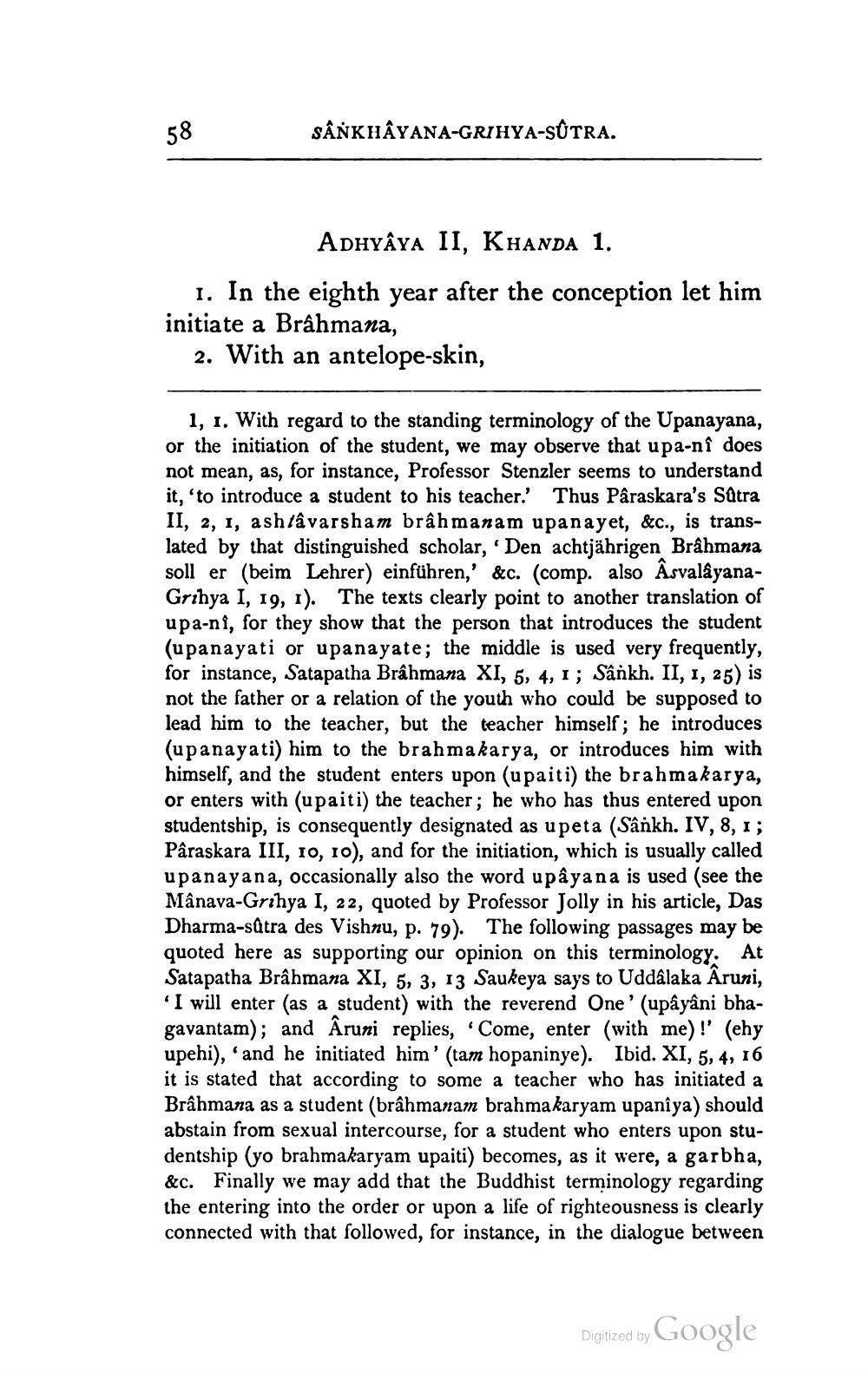________________
58
SÂNKHÂYANA-GRIHYA-SÚTRA.
Adhyâya II, Khanda 1. 1. In the eighth year after the conception let him initiate a Brâhmana,
2. With an antelope-skin,
1, 1. With regard to the standing terminology of the Upanayana, or the initiation of the student, we may observe that upa-nî does not mean, as, for instance, Professor Stenzler seems to understand it, 'to introduce a student to his teacher.' Thus Paraskara's Sätra II, 2, 1, ashtâ varsham brâhmanam upanayet, &c., is translated by that distinguished scholar, 'Den achtjährigen Brâhmana soll er (beim Lehrer) einführen,' &c. (comp. also ÂsvalâyanaGrihya I, 19, 1). The texts clearly point to another translation of upa-ni, for they show that the person that introduces the student (upanayati or upanayate; the middle is used very frequently, for instance, Satapatha Brâhmana XI, 5, 4, 1; Sankh. II, 1, 25) is not the father or a relation of the youth who could be supposed to lead him to the teacher, but the teacher himself; he introduces (upanayati) him to the brahmakarya, or introduces him with himself, and the student enters upon (upaiti) the brahmakarya, or enters with (upaiti) the teacher; he who has thus entered upon studentship, is consequently designated as upeta (Sankh. IV, 8, 1; Pâraskara III, 10, 10), and for the initiation, which is usually called upanayana, occasionally also the word upayana is used (see the Mânava-Grihya I, 22, quoted by Professor Jolly in his article, Das Dharma-sätra des Vishnu, p. 79). The following passages may be quoted here as supporting our opinion on this terminology. At Satapatha Brâhmana XI, 5, 3, 13 Saukeya says to Uddalaka Aruni, 'I will enter (as a student) with the reverend One' (upâyâni bhagavantam); and Aruni replies, Come, enter (with me)!' (ehy upehi), and he initiated him' (tam hopaninye). Ibid. XI, 5, 4, 16 it is stated that according to some a teacher who has initiated a Brâhmana as a student (brahmanam brahma karyam upaniya) should abstain from sexual intercourse, for a student who enters upon studentship (yo brahmakaryam upaiti) becomes, as it were, a garbha, &c. Finally we may add that the Buddhist terminology regarding the entering into the order or upon a life of righteousness is clearly connected with that followed, for instance, in the dialogue between
Digitized by Google




